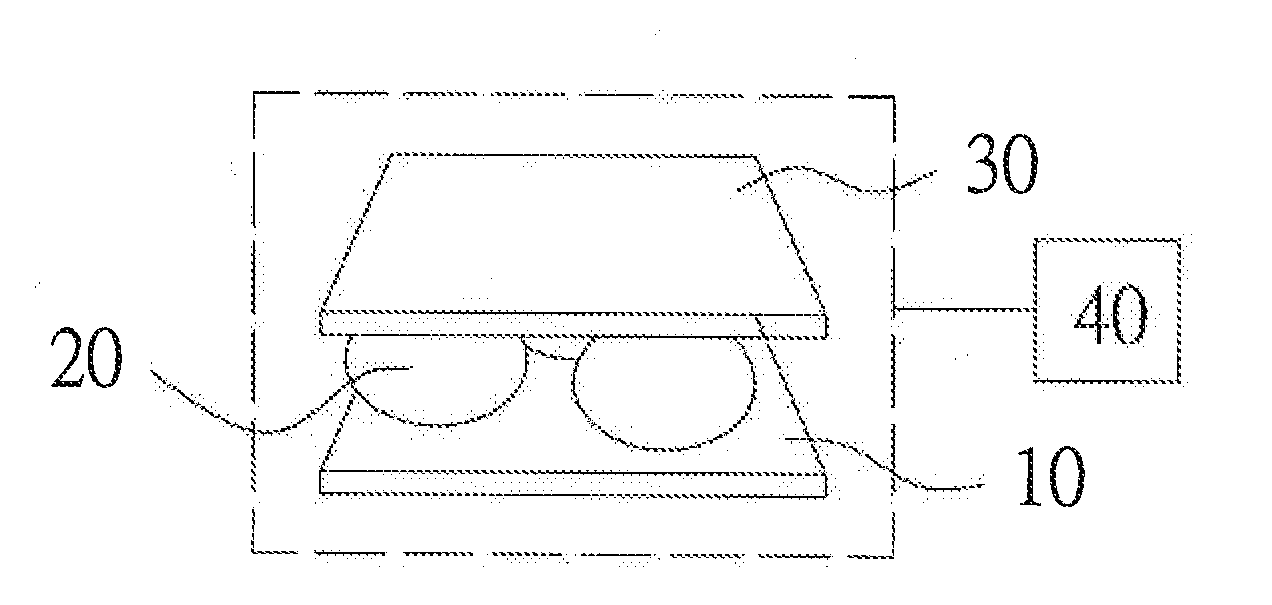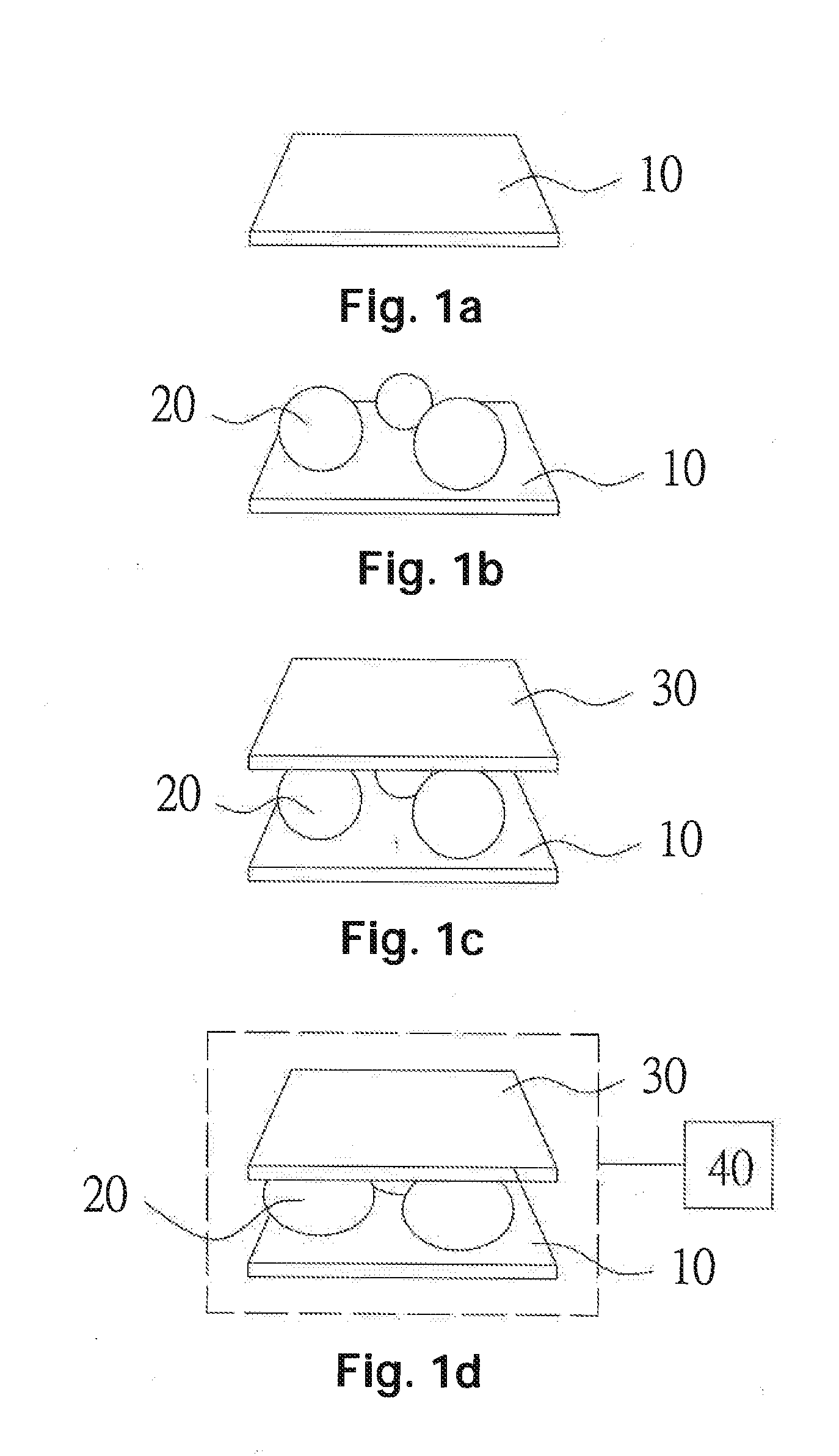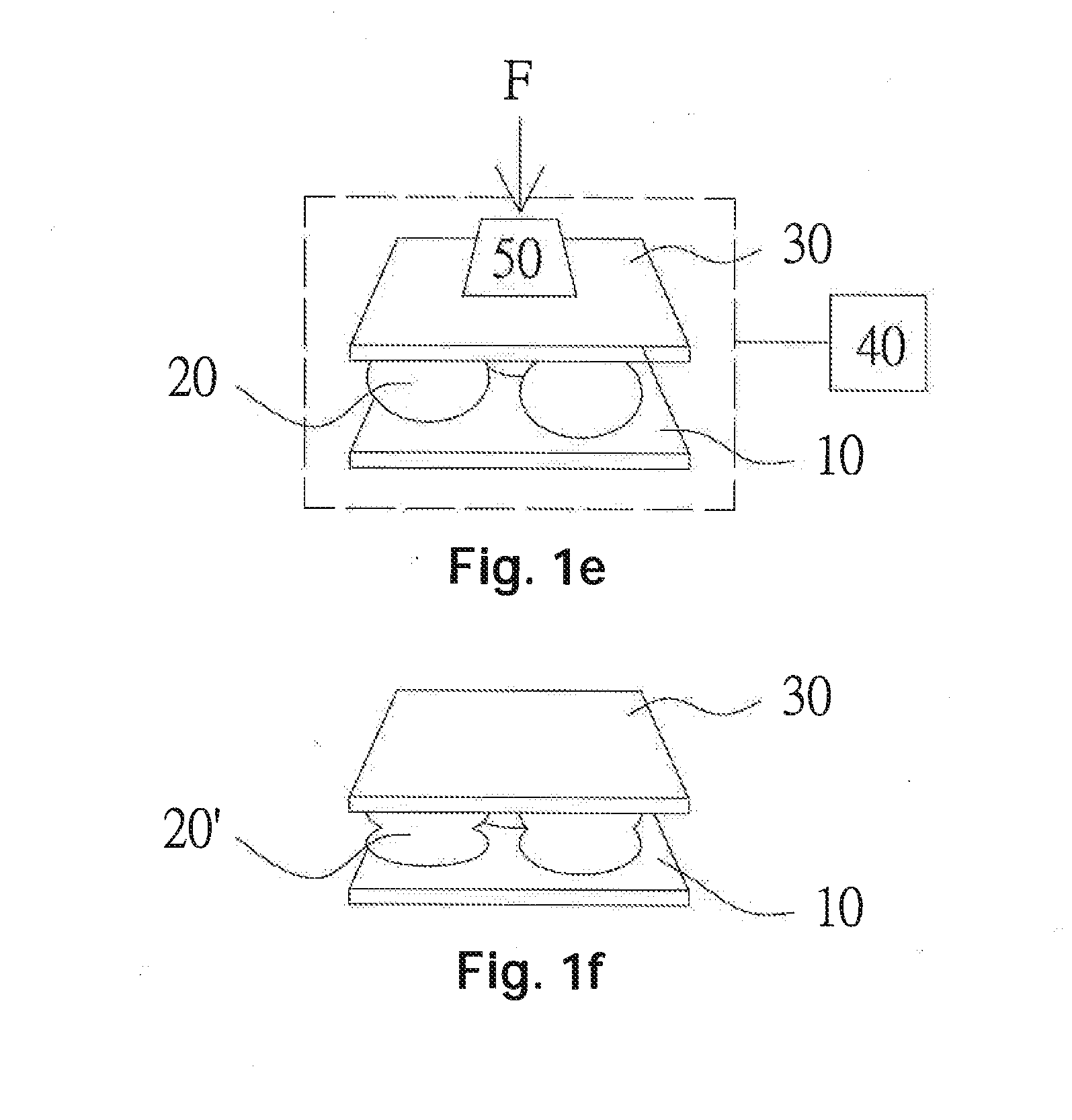Method for fabricating anisotropic polymer particles
a technology polymer particles, which is applied in the field of anisotropic polymer particles fabrication, can solve the problems of complicated process preparation of conventional technology and limited deformation types, and achieve the effect of simple process and saving cost and time of fabrication
- Summary
- Abstract
- Description
- Claims
- Application Information
AI Technical Summary
Benefits of technology
Problems solved by technology
Method used
Image
Examples
Embodiment Construction
[0012]The detailed explanation of the present invention is described as follows. The described preferred embodiments are presented for purposes of illustrations and description, and they are not intended to limit the scope of the present invention.
[0013]Refer to FIGS. 1a-1f diagrams schematically showing steps of a method for fabricating anisotropic polymer particles according to one embodiment of the present invention. The method of the present invention comprises steps: providing a first substrate 10 (as shown in FIG. 1a); arranging a plurality of polymer spheres 20 on the first substrate 10 (as shown in FIG. 1b); providing a second substrate 30 to cover the polymer spheres 20 (as shown in FIG. 1c); using a heating device 40 to heat the first substrate 10, the polymer spheres 20, and the second substrate 30 (as shown in FIG. 1d); applying force to the first substrate 10 and the second substrate 30 to squeeze the polymer spheres 20 (as shown in FIG. 1e) into a plurality of anisotro...
PUM
| Property | Measurement | Unit |
|---|---|---|
| Size | aaaaa | aaaaa |
| Size | aaaaa | aaaaa |
| Temperature | aaaaa | aaaaa |
Abstract
Description
Claims
Application Information
 Login to View More
Login to View More - R&D
- Intellectual Property
- Life Sciences
- Materials
- Tech Scout
- Unparalleled Data Quality
- Higher Quality Content
- 60% Fewer Hallucinations
Browse by: Latest US Patents, China's latest patents, Technical Efficacy Thesaurus, Application Domain, Technology Topic, Popular Technical Reports.
© 2025 PatSnap. All rights reserved.Legal|Privacy policy|Modern Slavery Act Transparency Statement|Sitemap|About US| Contact US: help@patsnap.com



